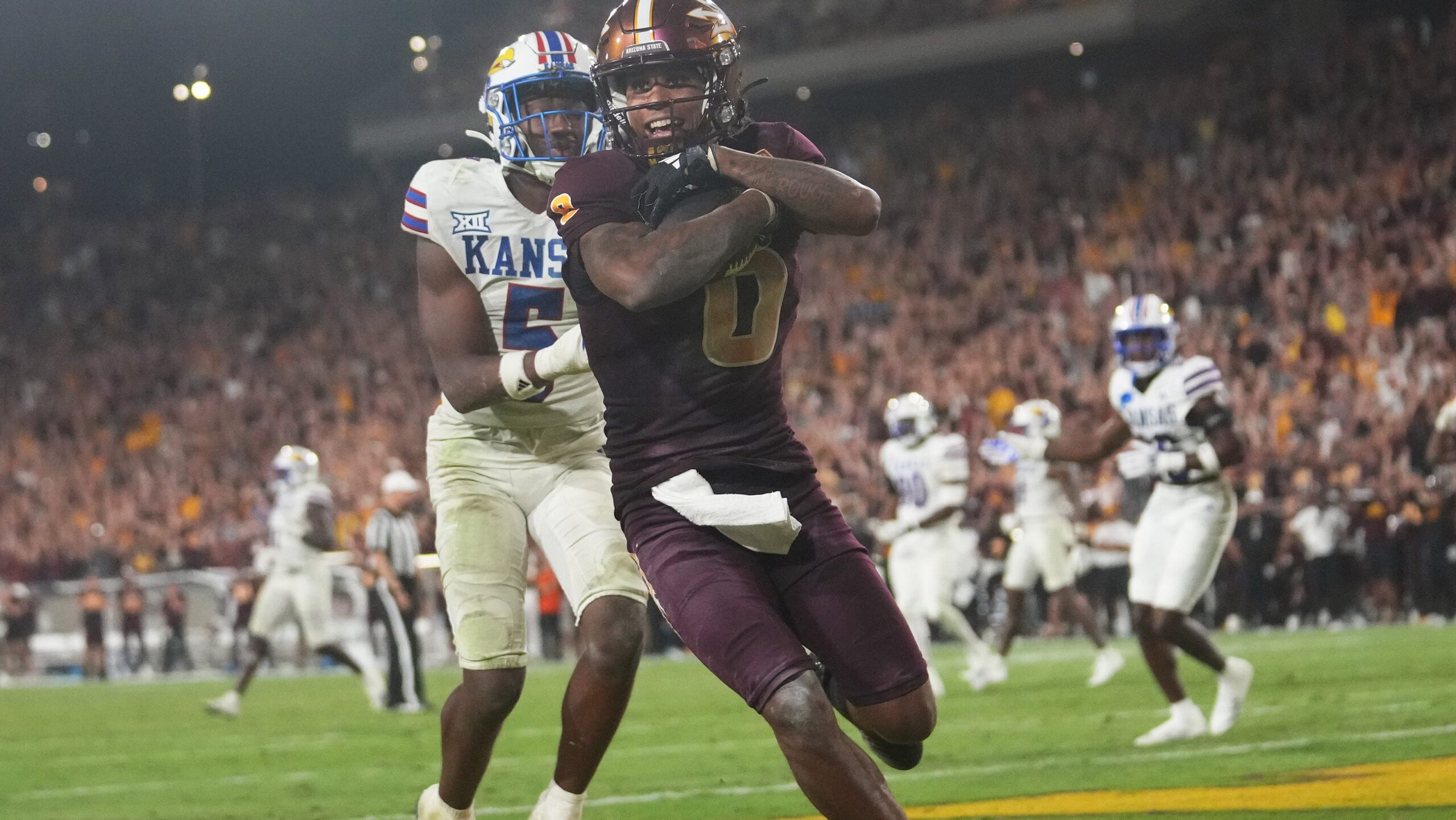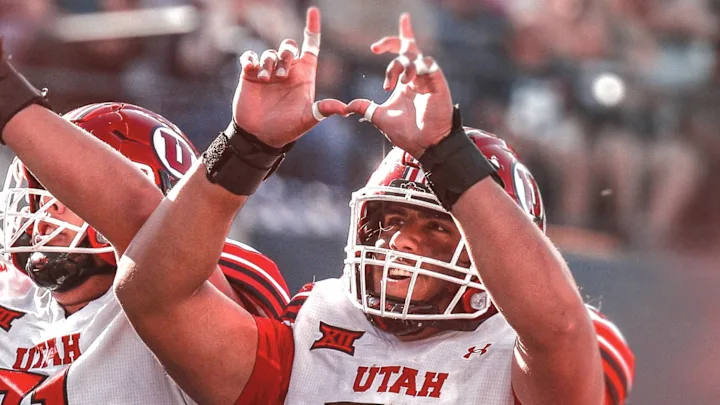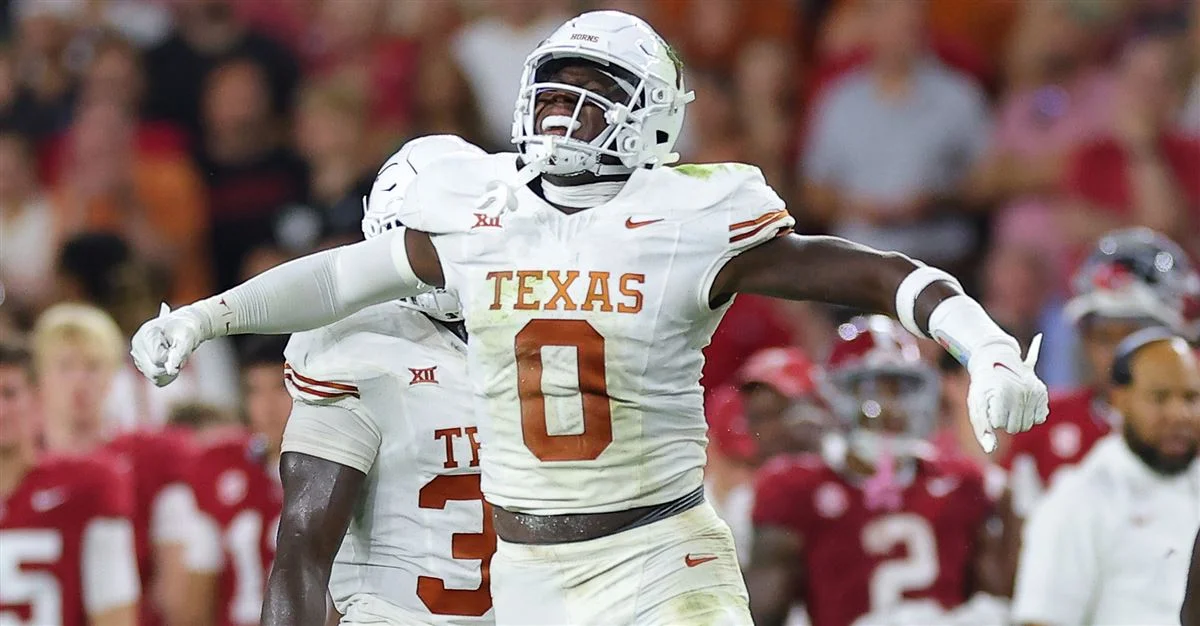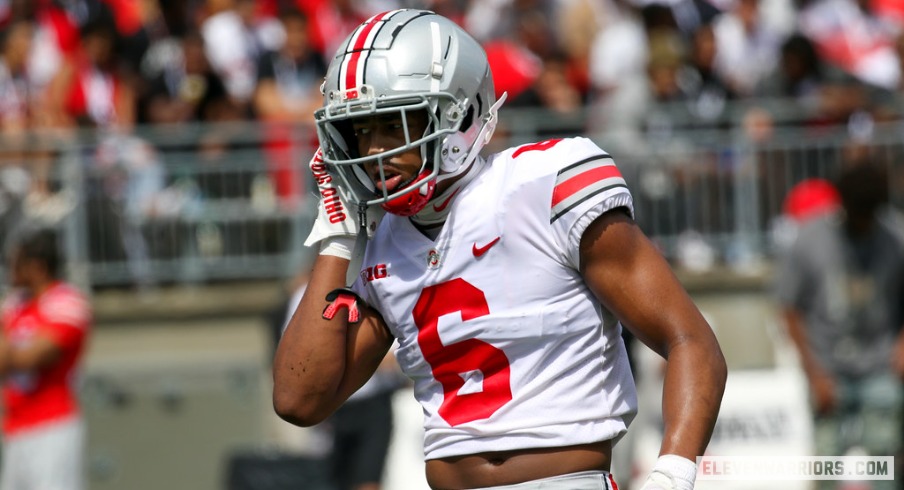By Charlie Campbell.
Send Charlie an e-mail here: [email protected]
Follow Charlie on Twitter @draftcampbell for updates.
This page was last updated April 19, 2015. Follow me @walterfootball for updates.
Position Review: 3-4 Outside Linebackers
3-4 Outside Linebacker Class
Early-round talent: A
Mid-round: B+
Late-round: B
Overall grade: A-
2015 prospects vs 2014
Dante Fowler < Jadeveon Clowney
Vic Beasley < Khalil Mack
Shane Ray < Anthony Barr
Randy Gregory > Dee Ford
Bud Dupree > Marcus Smith
Eli Harold > Demarcus Lawrence
Owa Odighizuwa = Kyle Van Noy
Lorenzo Mauldin < Trent Murphy
For the second straight year, there college ranks have produced an excellent class of 3-4 outside linebackers. The group of Clowney, Mack, and Barr have the potential to be a legendary class. All of them played well as rookies, although Clowney missed the vast majority of the season.
Last year’s draft featured three 3-4 outside linebacker candidates who went in the the top 10, five in the first round, and four more in the second round. The 2015 class should have at least seven 3-4 outside linebackers in the top 64 selections. there could be as many as six taken in the top 25 picks of the 2015 draft, so this class is definitely talented.
If you were to merge the two classes together, Fowler would be the fourth rated player behind Clowney, Mack and Barr. Fowler, Beasley, Ray, Gregory, and Dupree would all be better prospects than Ford. Harold is on a par with Ford and Smith as prospects in the 20s. Odighizuwa and Van Noy are roughly equal as early second-rounders, and Mauldin would go behind Murphy.
Safest Pick: Dante Fowler, Florida

Fowler looks like a safe pick to turn into a good 3-4 outside linebacker in the NFL. He has the strength, length, athleticism and quickness to thrive on the edge. Fowler can rush the passer, has the potential to be strong in run defense, and can drop into pass coverage. The 6-foot-3, 261-pounder has versatile size. Fowler has a tendency to freelance, but that could be turned into an asset in a 3-4. Quickly in his NFL career, Fowler should turn into a good 3-4 outside linebacker if he’s drafted into that scheme.
Previous Picks:
2014: Jadeveon Clowney
2013: Dion Jordan
Biggest Bust Potential: Randy Gregory, Nebraska

This is only because of off-the-field issues. As a player, I think Gregory is excellent and the best pure pass-rusher in the 2015 NFL Draft. Gregory admitted to failing the Combine drug test and having a real problem with marijuana. He has other off-the-field problems that have teams concerned about how he will transition to the NFL and if he can avoid getting suspended. Gregory has a ton of talent, but he has bust potential because of the issues away from the game.
Previous Picks:
2014: Dee Ford
2013: Barkevious Mingo
3-4 Outside Linebackers Rankings by Attributes
Pass Rush:
NFL prototype: DeMarcus Ware, Broncos
- Randy Gregory
- Dante Fowler
- Vic Beasley
- Shane Ray
- Eli Harold
- Bud Dupree
- Owa Odighizuwa
- Lorenzo Mauldin
Recap: The NFL is a passing-driven league, and 3-4 defenses need edge rushers who can consistently get to the quarterback. Rushing the passer is the primary responsibility for a 3-4 outside linebacker. Some college defensive ends can struggle to make the transition to rushing off the edge as they move out wider from offensive tackles. Other players thrive with the change.
In my opinion, Gregory is the best pass-rusher in the 2015 NFL Draft. He is extremely fast off the edge with repertoire of moves. He uses a spin move, swim move and bull rush effectively. Gregory is really smart about when he deploys those moves. He seems to diagnosis his blockers in an instant to know what type of rush will work best. For example, he doesn’t mess around by using the bull rush on heavy offensive tackles. Gregory catches smaller blockers by surprise with his bull rush and uses his speed moves on the slower tackles.
After Gregory it was tough to pick. I went with Fowler because he translates the best to the NFL. He is fast and physical off the edge with the ability to shed blocks or run around them. Others produced more sacks than Fowler, but his skill set is better suited for the next level than Beasley or Ray.
Beasley and Ray are both fast edge rushers. Both have excellent get-offs with the speed to close on the quarterback. I went with Beasley (6-3, 246) ahead of Ray (6-3, 245) because Beasley is more agile and not as stiff. Beasley does a better job of weaving around blockers. Although Ray is better at converting speed to power, he doesn’t have the same agility. Both players though could see fewer opportunities early on as their run defense could keep them on the sideline in the early going of their careers.
Harold is similar to Beasley and Ray. Harold is fast off the edge with the ability to close on the quarterback. He could use more strength to battle offensive tackles in the NFL, but does a nice job of using his hands to fight.
Dupree is big and quick, but he could use more development of pass-rushing moves. At times, he can be overwhelming with a tenacious presence off the edge. Other times, he seems to get stymied when his primary moves aren’t working. Dupree didn’t get as many pass-rushing opportunities at Kentucky, and that hurt not only his sack totals, but also his NFL development. He has a ton of upside, so in a few years, he could be higher on this list.
Odighizuwa has the skill set to produce pass rush, and there are times where he gets hot, but he also has stretches where he falls quiet. Odighizuwa needs to get more consistent and didn’t produce as much pass rush as the other three.
Mauldin is last, but he also can get after the quarterback. He had 6.5 sacks at outside linebacker last year. In 2013, Mauldin had 9.5 as a defensive end on the other side from Marcus Smith. Mauldin isn’t quite as explosive as the players ranked above, but Mauldin (6-4, 259) should be a nice value.
Run Defense:
NFL prototype: Ryan Kerrigan, Redskins
- Bud Dupree
- Owa Odighizuwa
- Dante Fowler
- Lorenzo Mauldin
- Randy Gregory
- Eli Harold
- Shane Ray
- Vic Beasley
Recap: Many 3-4 defenses typically don’t require their outside linebackers to be an asset against the run because they rely on their 3-4 defensive ends, nose tackle and inside linebackers to lead the way in run defense. However, the success of the read option is changing that as the edge linebackers play a critical role in defending against it. Being tough versus the run could become a more important attribute in the seasons to come.
Dupree (6-4, 269) is the best run-defender for the NFL in this class. He had 74 tackles in his final collegiate season, but often did that after shaking blocks and chasing down backs. Dupree is strong and tough at the point of attack. His run blocking should be an immediate asset.
Odighizuwa (6-3, 267) is strong at the point of attack. He can hold his ground, disengage and make tackles in run support. As a 3-4 outside linebacker, Odighizuwa should be able to play quickly in run-defense situations.
Fowler is kind of a mixed bag as a run-defender. He can blast into the backfield and rock running backs. He also can chase them down from behind. However, Fowler can struggle when downhill runs come straight at him.
Mauldin (6-4, 259) can also hold his own in the ground game. He had 51 tackles last year and showed improvement from his junior year. Mauldin has the bulk to play the 3-4 edge.
Gregory lost weight before the Combine and since then has gained some back, so that makes him harder to evaluate. In games, he can get worn down against downhill rushing attacks coming straight at him (see Wisconsin), but he did show the ability to fight at the line of scrimmage and not get pushed out of his gap. Gregory had 56 tackles last year and 66 the year before. He has some natural functional strength, and in time, he should be well-rounded as long as he remains on the field.
Harold had 56 tackles last year, but he needs more strength for downhill runs in the NFL. The same goes for Beasley and Ray. Sources say that Beasley and Ray need a lot of improvement in their run defense for the NFL and won’t be on the field in running situations early in their careers. Beasley had only 33 tackles last year and 41 the year before. As a sophomore, Beasley had eight sacks, but only 14 tackles. His run defense has major room for improvement.
Dropping Into Coverage:
NFL prototype: Clay Matthews, Packers
- Dante Fowler
- Bud Dupree
- Randy Gregory
- Vic Beasley
- Shane Ray
- Eli Harold
- Lorenzo Mauldin
- Owa Odighizuwa
Recap: The NFL is a passing-driven league, and 3-4 defenses need linebackers who can function in space while dropping into pass coverage. The 3-4 defense is predicated on variety, so it requires linebackers to fall back into pass coverage to avoid predictability.
This group doesn’t have a lot of experience dropping into coverage. It isn’t surprising because they were the best pass-rushers on their teams, so having them drop into coverage often didn’t make a lot of sense.
Even though Fowler was mainly rushing the quarterback, he did well dropping into coverage when asked to do it. In the Gators’ version of the 3-4, Fowler did drop some into zone. He moves well in space and has good instincts.
Dupree also did some dropping into pass coverage for Kentucky as the Wildcats used more variety in their scheme. He did a respectable job of it, and in the NFL, he should be able to transition faster in this role than some of the other players.
The other six players didn’t do it enough to provide a real evaluation. Beasley, Ray, Gregory and Harold have more fluid athleticism to learn to do it, thus they’re rated higher.
Speed:
NFL prototype: Aldon Smith, 49ers
- Vic Beasley
- Randy Gregory
- Dante Fowler
- Shane Ray
- Eli Harold
- Bud Dupree
- Owa Odighizuwa
- Lorenzo Mauldin
Recap: Speed is necessary to be an effective 3-4 outside linebacker. A quick first-step makes a big difference in applying pressure on the quarterback. The elite 3-4 edge rushers are explosive and are extremely fast flying into the backfield.
In terms of pure foot speed, Beasley is the faster rusher off the edge. He has a lightning first-step and closes on quarterbacks in an instant. Beasley is very fast off the edge and presents a speed mismatch.
Gregory is very fast. He gets off the line extremely well, and his speed has offensive tackles constantly reaching for him.
Fowler is very fast, and considering he’s bigger than the other edge defenders, it makes him even more dangerous on the edge. Fowler gets off the ball quickly and is very fluid.
Ray and Harold are similar. They both get off the ball quickly and get penetration into the backfield. Ray and Harold don’t quite have the explosiveness of the other defenders.
Dupree and Odighizuwa have a natural burst for big-bodied edge defenders. They are fast and physical. Mauldin also has quickness off the snap, but isn’t the speed demon of the top defenders.
Strength:
NFL prototype: Tamba Hali, Chiefs
- Bud Dupree
- Owa Odighizuwa
- Dante Fowler
- Lorenzo Mauldin
- Randy Gregory
- Eli Harold
- Vic Beasley
- Shane Ray
Recap: 3-4 outside linebackers need the strength to fight off offensive linemen, especially when teams slide protections their direction with double-teams. Having the power to shed blocks separates the effectiveness of a lot of players.
Dupree is the strongest of these prospects by far. He weighs the most and has the power to bench press blockers off of him to drive them backward. Dupree has natural strength that will only get more functional after time in an NFL strength and conditioning program. His power will be an asset at the next level.
Odighizuwa showed power to fight off tackles and bull rush them in college. He can bully offensive players and has a mean streak. Fowler is strong for his size and is very physical. He can shed blocks and also delivers violence when he gets there.
Mauldin has some strength to him at nearly 260 pounds. It wouldn’t hurt for him to improve his ability to shed blocks. Gregory has some shock to his hands even though he only weighs in the 240s. He has natural strength that catches many by surprise when he uses a bull rush. At 6-foot-5, Gregory has the frame to add weight.
Harold (6-3, 247) and Ray (6-3, 245) need to add more strength for the NFL. They both are going to have issues with NFL offensive linemen with downhill runs coming straight at them.
Beasley played in the 220s and 230s in college, but now is in the 240s. His lack of strength and run defense was a liability. That hurt his ability to see the field in college and will continue to do so in the NFL. Beasley has to continue to get stronger to be a better run-defender.
Motor:
NFL prototype: James Harrison, Steelers
- Shane Ray
- Dante Fowler
- Vic Beasley
- Eli Harold
- Randy Gregory
- Lorenzo Mauldin
- Bud Dupree
- Owa Odighizuwa
Recap: The majority of great pass-rushers have motors that don’t quit. Effort can make the difference between an edge rusher having 12 sacks in a season versus eight.
Ray has a relentless style of play. Every snap, he’s looking to make a play and always gives good effort. Ray doesn’t quit and keeps fighting. That led to him getting some effort and coverage sacks last season.
Fowler and Beasley definitely have good motors. Fowler fulfills his assignments at a high level, and you don’t see him loafing when a play goes away from him. His motor wasn’t as good in 2013, but he changed that as a junior. In college, Beasley definitely got some sacks via effort and by not quitting on a play. Harold and Gregory’s motors are similar but a notch below.
Mauldin and Dupree gave good efforts generally, but each one could have some quiet stretches. Odighizuwa generally was pretty good, but he seemed to take some plays off at times.
Upside:
NFL prototype: Aldon Smith, 49ers
- Dante Fowler
- Bud Dupree
- Owa Odighizuwa
- Randy Gregory
- Eli Harold
- Vic Beasley
- Shane Ray
- Lorenzo Mauldin
Recap: This group of edge rushers has a lot of upside. These players have room for improvement as professionals, and none of them are close to being a finished product.
The upside with Fowler is clear. He has a unique combination of speed, size and strength. Once Fowler develops more pass-rushing moves and gets some NFL coaching, he could be a dynamic player in the NFL.
Dupree also is big, fast and strong. He’s not quite as athletic as Fowler, but Dupree has a lot of upside and his best football is ahead of him. Odighizuwa is similar with a lot of untapped potential. He is athletic with size and speed. Odighizuwa had injury issues in college; avoiding injured reserve could be key for his future development.
Gregory has a lot of athletic upside but has to stay on the field to reach it. Harold should be able to get better in the next level and add strength.
Beasley, Ray and Mauldin all have room to get better and develop as pros. Their bodies could be close to being tapped out in terms of adding a significant amount of weight.
Forced Fumbles:
NFL prototype: DeMarcus Ware, Broncos
- Vic Beasley
- Shane Ray
- Dante Fowler
- Lorenzo Mauldin
- Bud Dupree
- Eli Harold
- Randy Gregory
- Owa Odighizuwa
Recap: Defenses and teams thrive off turnovers, so a pass-rusher who has the skills to force fumbles are game-changers. Many players go for strip sacks, but some are more effective than others.
By far, Beasley is the best of this group at the art of the strip-sack. He had seven forced fumbles over the past two years. When hunting down a quarterback from behind, Beasley is very cognizant to slap the ball out and create a turnover for his team. He is very instinctive to force fumbles, and that shouldn’t change in the NFL.
Ray had five forced fumbles at Missouri with three last year. He did a good job of targeting the ball when making his sacks. Fowler, Dupree and Mauldin each had four forced fumbles combined in 2014 and 2013. In the NFL, those three should get better at creating fumbles. Harold had three forced fumbles.
Surprisingly, Gregory had one forced fumble and Odighizuwa had zero forced fumbles. Both of them could stand to improve their abilities to slap the ball out.
NFL Picks - Dec. 13
NFL Power Rankings - Dec. 10
2026 NFL Mock Draft - Dec. 10
Fantasy Football Rankings - Sept. 1




